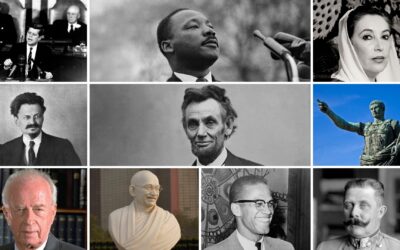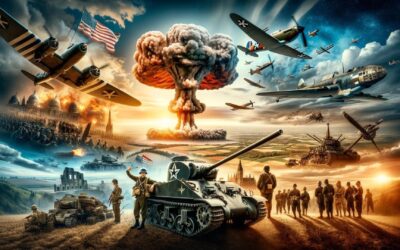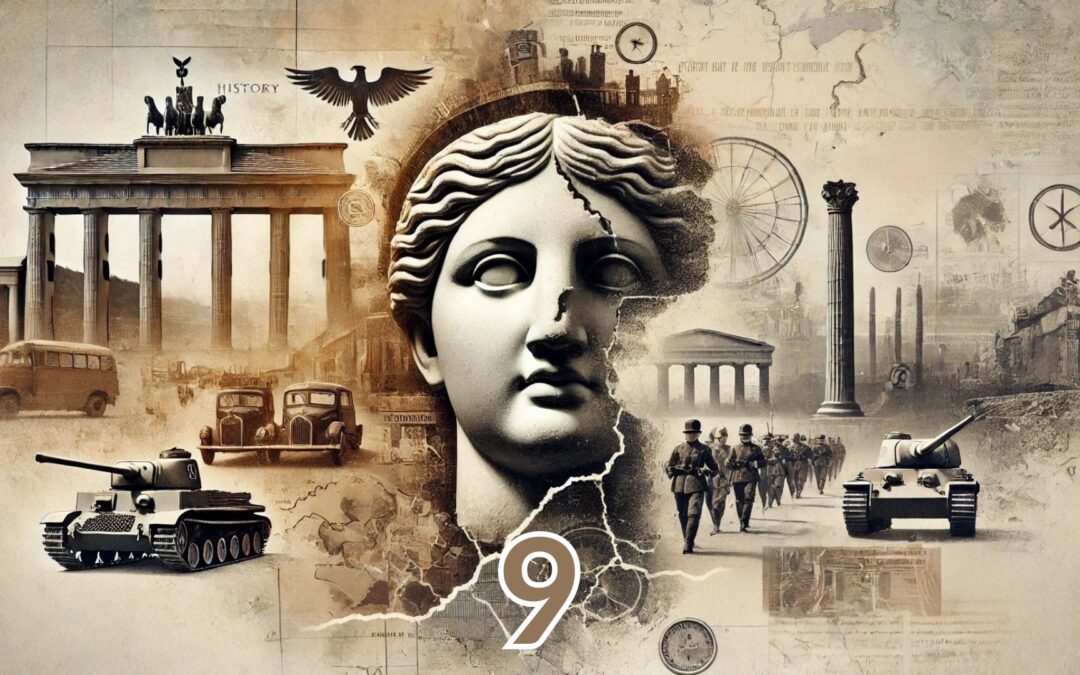Once upon a time, the world was swept up in the gales of an extraordinary storm, one marked by tremendous power and unimaginable fear – the advent of nuclear technology. This tale is not merely a historical account, but a continuous narrative, the pages of which are being written even today. It tells a story of nuclear proliferation, a global challenge that we face together, united as a species.
Our journey starts in the heart of the Second World War, with the creation of the first atomic bomb under the auspices of the Manhattan Project. This monumental achievement heralded a new age, an era where humankind had acquired the means to wield the power of the atom. While this development marked the end of the war, it also introduced a new factor into the global equation – the possibility of nuclear warfare.
In the immediate aftermath of the war, only the United States possessed nuclear weapons. But this monopoly was short-lived, as the Soviet Union detonated its first atomic bomb in 1949. The two superpowers then engaged in a deadly arms race, each trying to outdo the other in the number and strength of their nuclear arsenal.
As the decades passed, more actors joined this high-stakes theatre. The United Kingdom, France, and China also developed nuclear weapons, resulting in the five nuclear-weapon states recognized by the Nuclear Non-Proliferation Treaty (NPT). However, the allure of nuclear power did not stop there. India, Pakistan, North Korea, and Israel also pursued nuclear capabilities, further complicating the global landscape.
The increase in the number of nuclear-weapon states sparked grave concerns about nuclear proliferation. Not only was there the risk of nuclear war, but also the specter of nuclear terrorism, with the potential of non-state actors acquiring these devastating weapons. The international community recognized that this was not a problem any single nation could solve – it was a challenge that required collective action.
The response to this challenge was the creation of the NPT in 1968, a landmark international treaty aimed at preventing the spread of nuclear weapons and weapons technology, promoting the peaceful use of nuclear energy, and furthering the goal of nuclear disarmament. The treaty represented a critical first step in curbing nuclear proliferation, though it was not without its shortcomings.
Despite the treaty, several nations chose to remain outside of the NPT framework and developed nuclear capabilities independently. Furthermore, the objective of complete nuclear disarmament, enshrined in the treaty, remains unfulfilled. While the NPT has undoubtedly helped manage nuclear proliferation, it has not completely stemmed the tide.
This brings us to the present, where the specter of nuclear proliferation continues to loom large. The rapid technological advancements of the 21st century have exacerbated this issue. Today, there’s the threat of cyberattacks on nuclear facilities and the potential for 3D-printing technology to be misused for nuclear weapons production.
We also face challenges posed by nuclear energy programs. While nuclear energy presents a potential solution to the climate crisis, it simultaneously raises concerns about nuclear proliferation, as the technology used for peaceful purposes can also be diverted to make weapons.
Moreover, the geopolitical landscape also adds complexity to the nuclear narrative. North Korea’s nuclear program, the Iranian nuclear deal, and tensions between nuclear-armed India and Pakistan are just a few examples of the intricate and volatile situations that have implications for nuclear proliferation.
So, how do we address this formidable challenge? There is no easy solution, but there are several paths that we, as a global community, can take. Enhancing international cooperation and strengthening existing treaties is a vital first step. We can also invest in technology to improve nuclear detection capabilities and tighten security around nuclear materials and facilities.
Furthermore, we need to promote diplomacy and dialogue over aggression and hostility. As history has shown, escalating tensions can push nations towards nuclear weapons as a form of deterrence. By encouraging peaceful relations, we can mitigate the perceived need for such weapons.
Lastly, education and awareness are crucial. By informing the public about the consequences of nuclear proliferation and the importance of disarmament, we can cultivate a global citizenry committed to a peaceful, nuclear-weapon-free world.
In conclusion, nuclear proliferation is a complex and ongoing global challenge. It’s a narrative that’s being written by every nation and will be inherited by future generations. As daunting as it may seem, it is a tale that we have the power to shape. Through cooperation, diplomacy, and dedication, we can ensure that this story, our story, is one of peace and prosperity, rather than destruction and despair.
It is the responsibility of each one of us to strive for a world where nuclear weapons are a relic of the past, not a threat to our future. In this interconnected world, our actions, or the lack thereof, can echo across the globe. So let us seize this moment, let us come together as one, and let us write a tale that future generations will look back upon with gratitude, rather than regret. Because in the end, this is not just a story about nuclear proliferation – it is a story about us, our resilience, and our capacity for hope in the face of the greatest challenges.
Keywords:
- Nuclear Proliferation: The spread of nuclear weapons and related technology to countries that do not already possess them.
- Manhattan Project: A research and development project during World War II that produced the first nuclear weapons.
- Arms Race: A competition between nations for superiority in the development and accumulation of weapons.
- Nuclear Non-Proliferation Treaty (NPT): An international treaty aimed at preventing the spread of nuclear weapons and promoting the peaceful use of nuclear energy.
- Nuclear Terrorism: The use or threat of use of nuclear weapons by non-state actors.
- Cyberattacks: Attacks carried out via computers or other digital devices, often to disrupt, damage, or gain unauthorized access to systems, networks, or data.
- 3D-Printing Technology: A manufacturing process that creates a physical object from a digital design, layer by layer.
- Geopolitical Landscape: The global structure of political power, influenced by geographic, economic, and strategic factors.
- Nuclear Detection: Techniques and equipment used to detect the presence of nuclear and radioactive materials.
- Deterrence: A strategy intended to dissuade an adversary from taking an action by raising the cost or risk associated with it.
Key Takeaways:
- The advent of nuclear weapons marked the beginning of a new era characterized by the threat of nuclear warfare.
- The proliferation of nuclear weapons has been a significant concern for the international community, prompting the creation of the Nuclear Non-Proliferation Treaty.
- Despite the NPT, several nations remain outside of its framework, and the goal of complete nuclear disarmament has not been achieved.
- Modern challenges to nuclear non-proliferation include cyber threats, misuse of 3D-printing technology, and the dual-use nature of nuclear energy programs.
- Addressing nuclear proliferation requires international cooperation, technology, diplomacy, and public awareness.
The Nuclear Age Articles
Unraveling The Atomic Age: The Life and Legacy of J. Robert Oppenheimer
Unveiling the Atom: The Manhattan Project’s Deep Impact on World History
Albert Einstein: The Maverick Mind that Revolutionized Physics
Leo Szilard: The Atomic Pioneer’s Crusade for Peace
The Ethical Odyssey: Exploring Morality in the Course of Scientific Discovery
Los Alamos National Laboratory: Navigating the Past, Present, and Future of Scientific Innovation
The Cold War: Superpowers in the Ballet of Weaponry
Nuclear Proliferation: The Ever-Present Global Challenge
Interplay of Science and Politics: The Unsung Dance of Progress
Enrico Fermi: Mastermind Behind the Nuclear Age
From Atomic To Thermonuclear: A Detailed Examination of Nuclear Weapon Evolution
The Unforgotten Echoes: Hiroshima and Nagasaki’s Tale of Nuclear Devastation and Human Resilience
Living Under the Mushroom Cloud: The Psychological Impact of the Nuclear Age
Nuclear Fallout: Unmasking the Invisible Threat to Health and Environment
The Power and Peril of Nuclear Energy: A Balanced Perspective
Radiation Sickness: Unveiling the Hidden Costs of the Nuclear Age
From Darkness to Light: Lessons from Chernobyl and Fukushima
Deciphering the Nuclear Waste Conundrum: The Path Towards Sustainable Solutions
Guarding the World from Nuclear Threats: International Laws for Nuclear Disarmament
Journey to Peace: Unraveling the Path to Global Nuclear Disarmament
Culture Echoes of the Atomic Age: Artistic Narratives in the Nuclear Era











0 Comments